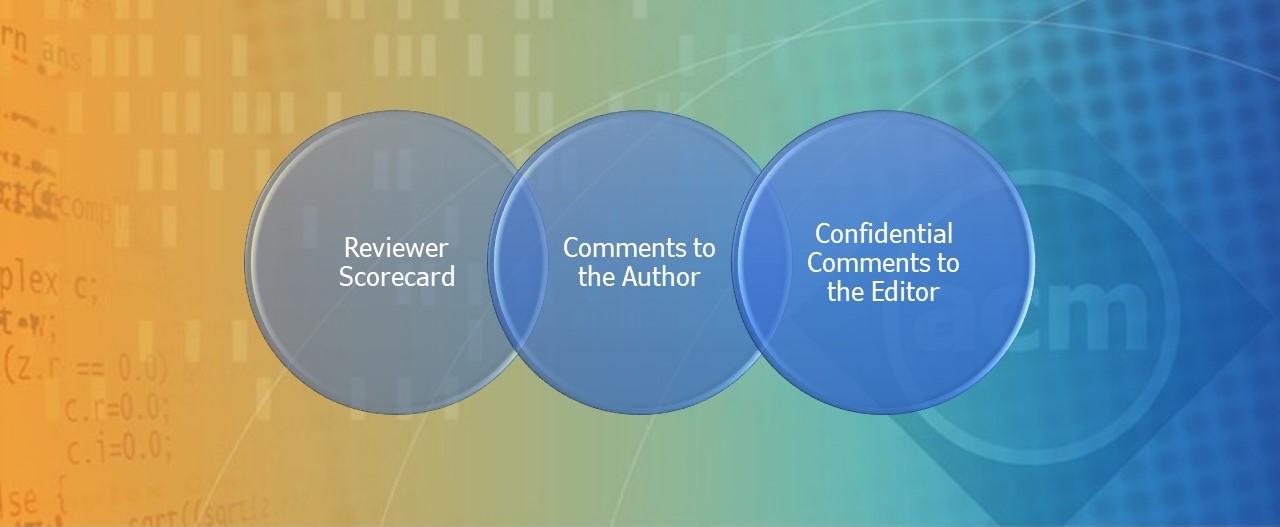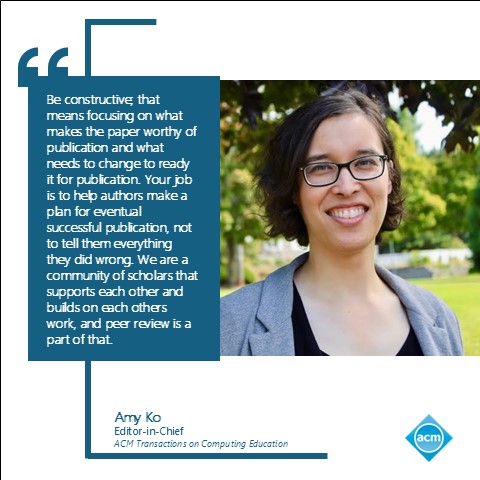Submitting Your Review

Reviewer Scorecard
To assist in submission of the review, many publications provide a scorecard that is completed by the reviewer and assists in providing a thorough review.
- Scorecards help handling editors make decision recommendations by ensuring that the same set of questions is answered by each reviewer regardless of how the reviewer conducted their review.
- Scorecards are created by the publication’s editorial team to help a reviewer structure their review with appropriate criteria, which in turn helps editors and authors to better understand the reviewer’s critiques.
- Reviewers should use the scorecard to support their decision recommendation.
- If a paper is determined to be publishable, but needs to have some changes made first, then the paper is usually given a Revision (Major or Minor) decision.
Note that the reviewer of the original submission may be asked to review any revised versions.
Comments to the Author
The reviewer should provide comments to the author that will help them understand why the paper was given the specific decision type.
- The comments should be constructive and specific and should follow the structure of the scorecard.
- The reviewer should provide specific examples and actionable advice, rather than vague critiques, and keep the author’s goal and intended audience in mind.
- To avoid multiple time-consuming rounds of revision, the reviewer should endeavor to be comprehensive and address all points in their first review.
- The tone of the review should be professional and respectful.

Confidential Comments to the Editor
There are times where confidential comments to the editor are appropriate and indeed essential; however, reviewers should actively seek to minimize them.
Comments directed exclusively to the editor should not contradict the main points of the review as written for the authors.
Reviewers should consider if there is a way to express editor-specific comments in the main review, as this promotes transparency and gives the authors better feedback.
The confidential comments section is for when it is impossible to communicate something to the author in an appropriate way (e.g., ethical concerns, policy violations, anonymity issues, etc.). If needed, the editor can investigate and/or consult with ACM to determine next steps.
Discussions in Peer Review
Reviewer Discussion:
ACM conferences, and some journals, give the peer review team the opportunity to discuss their assessments of the paper with each other before the final reviews are submitted and before a decision is rendered.
The reviews, reviewer decision recommendations, and summaries of these discussions are sent to the authors with the decision.
Author Rebuttal:
The conference peer review workflow often allows the authors' to respond to the review team once a preliminary decision is rendered.
Reviewers should read and at least briefly respond to the author(s) rebuttal before the final decision is rendered.
Module 5
Submitting Your Review
Reviewer Scorecard
Comments to the Author
Confidential Comments to the Editor
Discussions in Peer Review
Module 6: Artifact Review and Badging
ACM Peer Reviewer Certification Exam
****
COMPLETE
✓ Module 1: Peer Review Overview
✓ Module 2: Assessing Your Suitability to Review
✓ Module 3: Review Touchstones
✓ Module 4: Evaluating the Paper